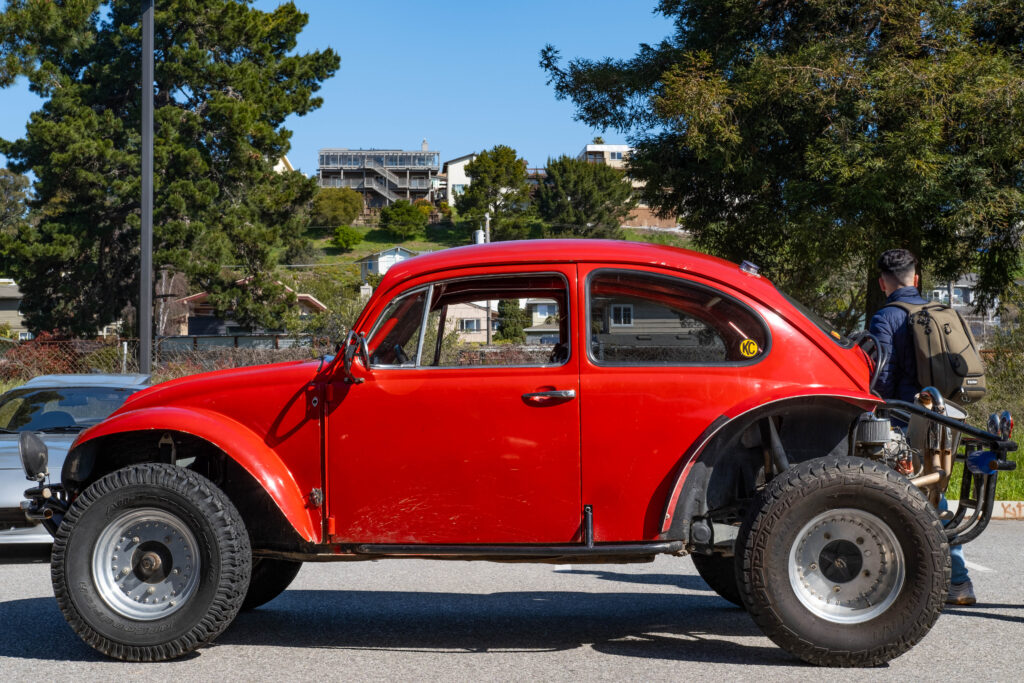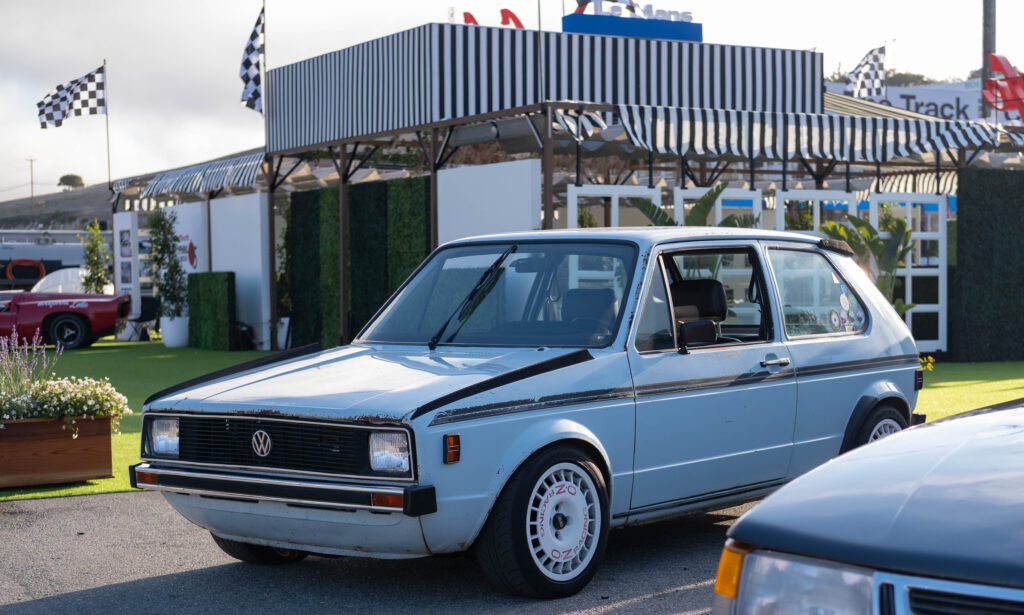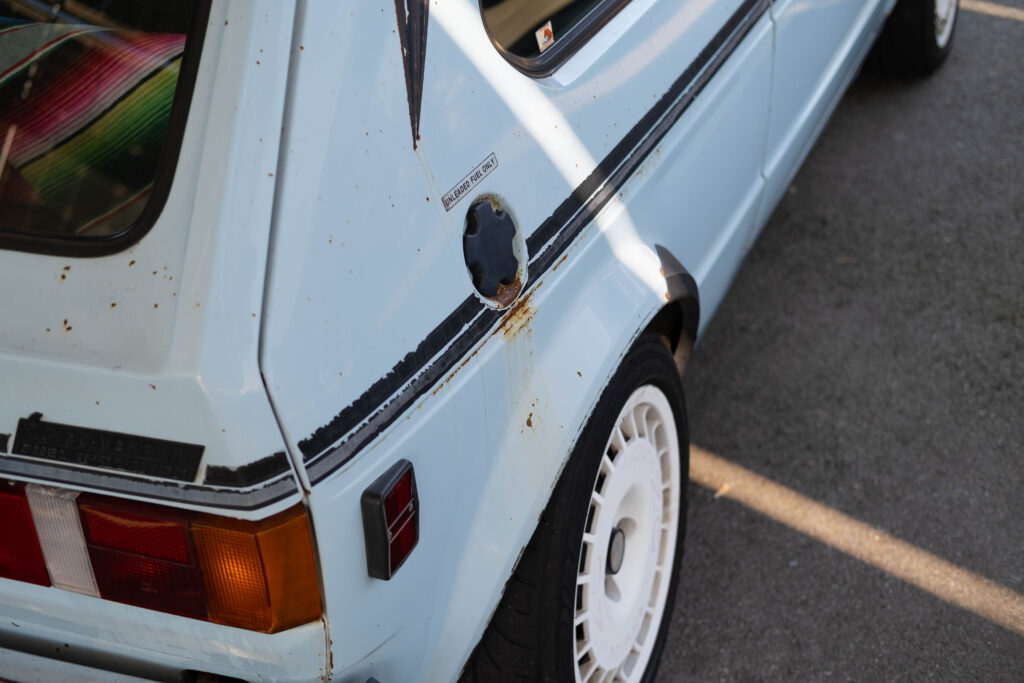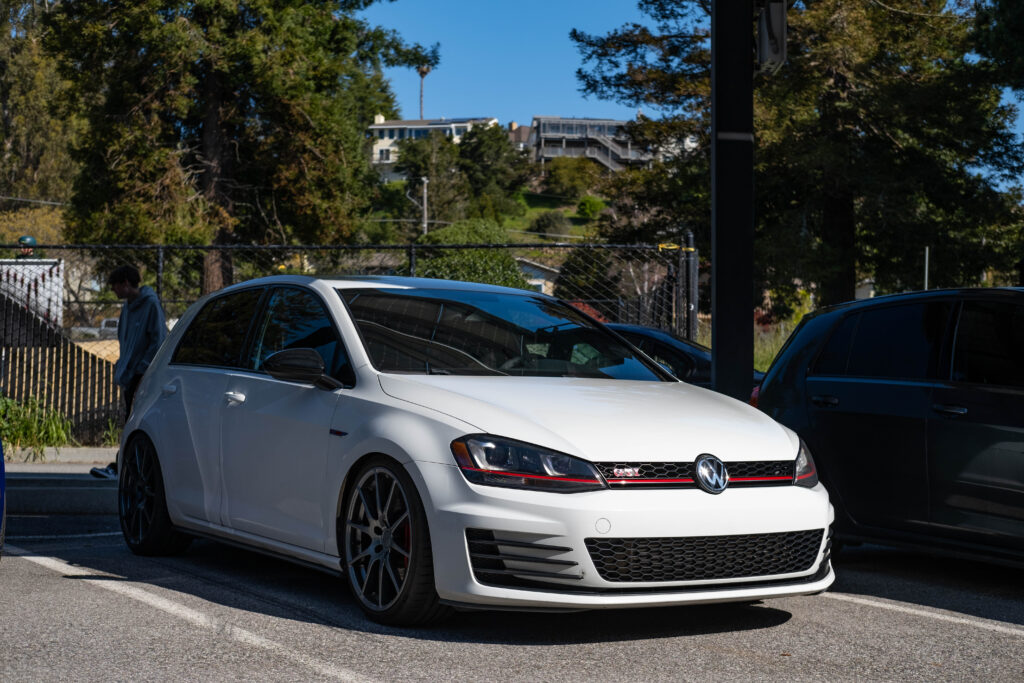Usually, I would just give you the easy digestible information about the Volkswagen GTI. But this time I wanted to take it further. This one feels a bit more personal. Yes, we can start with the GTI right away, but we might be better served by taking a couple of steps back. Not with the Golf but with the Beetle.
Volkswagen Beetle Original Conception
The Beetle is originated by a request of Adolf Hitler. Hitler commissioned Ferdinand Porsche to design the “people’s car”. And as a matter of fact, that is exactly what Volkswagen means in German. Someone fact check me here. A vehicle that would be affordable for the average German citizen. The initial concept was developed in 1934, with the goal of creating an inexpensive, reliable car for mass production.
Prototype and Early Development
The first prototypes were developed between 1936 and 1938. These early models incorporated key design elements that would become characteristic of the Beetle: Rear-mounted, air-cooled engine. Its distinctive rounded shape. And an affordable manufacturing process. Unfortunately, the production units started in 1938 but were quickly stopped by the war. Until its rebirth in 1945, post war. We will put a pin here and move 30 years ahead, to the Golf.

Enter the Volkswagen Golf
By the late 1960s, the Volkswagen Beetle’s sales began to decline. The rear-engine, air-cooled design that had defined the brand was no longer competitive against modern, efficient front-engine, front-wheel-drive cars from competitors like Fiat, Renault, and British Leyland.
To secure its future, VW sought a radical departure from the Beetle’s platform. The company looked toward a new generation of compact cars that prioritized practicality, efficiency, and versatility while maintaining affordability.
The Volkswagen Golf Mk1, was introduced in 1974. A groundbreaking model that redefined Volkswagen’s identity and the compact car market. Designed as a successor to the iconic Beetle, it was VW’s first foray into modern, front-engine, front-wheel-drive hatchbacks, establishing a formula that remains the core of the Golf’s DNA to this day. But also, being pushed by the 1973 Oil Crisis.
- Leadership Decision: VW acquired Auto Union (future Audi) in the 1960s, bringing in expertise in front-wheel-drive technology. This acquisition influenced the Golf’s engineering approach.
- Development Goals: VW wanted a car that could succeed the Beetle in global markets while meeting the demands of the 1970s consumer: fuel efficiency, compact dimensions, and modern styling.
Design: Giugiaro’s Masterpiece
Volkswagen entrusted the design of the Golf to Giorgetto Giugiaro, a renowned Italian designer from Italdesign. Known for his ability to blend functionality with aesthetic appeal, Giugiaro delivered a design that was simple, clean, and modern.
- Exterior: The Golf featured a boxy yet aerodynamic shape with sharp edges, a low beltline, and a wide stance. Its squared-off rear maximized cargo space, while its large glasshouse provided excellent visibility.
- Compact Dimensions: At 3.7 meters in length, the Golf Mk1 was compact enough for urban driving yet spacious inside, thanks to efficient packaging.
- Hatchback Layout: The rear hatch added versatility, appealing to families and young drivers alike.
Let’s give Giugiaro some context:
Giorgetto Giugiaro: A Design Maestro
Giorgetto Giugiaro was an Italian automotive designer who worked with the design firm Italdesign, which he founded in 1968. He is widely considered one of the most important car designers in automotive history, having created iconic designs for multiple manufacturers including Volkswagen, Ferrari, Maserati, and many others.
The design was so influential that automotive journalists and designers often refer to this “folded paper” design language as quintessentially Giugiaro. His approach was to create cars that looked modern, efficient, and purposeful – exactly what Volkswagen needed to move beyond the Beetle era.

Collaboration and Development
While Giugiaro created the exterior design, the project involved extensive collaboration with Volkswagen’s engineering team. The goal was to create a car that was not just beautiful, but also practical, affordable, and efficient – qualities that would become hallmarks of the Golf brand.
It’s worth noting that Giugiaro’s design was so successful that it influenced automotive design for decades to come, with many manufacturers adopting similar angular, practical design approaches in the following years.
In 1971, Volkswagen decided to start mass production of the new model. Giugiaro unveiled his Golf design that same year, which was later perfected in the newly established Design Centre in Wolfsburg under the direction of then-Chief Designer Herbert Schäfer.
Engineering and Production
Underneath its stylish exterior, the Golf Mk1 was a technical revolution for VW. It combined engineering lessons from Audi with new technologies to create a modern and reliable compact car.
Key Technical Features:
- Front-Wheel Drive: A first for Volkswagen, offering better space efficiency and driving dynamics compared to the Beetle’s rear-wheel-drive layout.
- The Golf featured a transversely mounted front engine, breaking from the rear-engine, rear-wheel-drive layout of the Beetle.
- Water-Cooled Engine: Another departure from the Beetle’s air-cooled flat-four engine, the Golf used a transverse-mounted inline-four engine, ranging from 1.1 to 1.5 liters initially.
- Chassis and Suspension:
- MacPherson struts in the front and a torsion beam axle in the rear provided simplicity, reliability, and good handling.
- Lightweight construction (~800 kg) made the Golf agile and efficient.
Production:
The Golf Mk1 was produced at Volkswagen’s main factory in Wolfsburg, Germany. It quickly became a global product, with production facilities in South Africa, the U.S. (Pennsylvania), and other locations.
- Launch: The Golf was officially launched in May 1974. Its American counterpart, the Volkswagen Rabbit, debuted in 1975.
- Reception: The Golf was an instant success, praised for its practicality, driving experience, and modern design. It replaced the Beetle as VW’s best-seller within just a few years.
The Golf’s success was immediate and overwhelming. By October 1976, just over two years after its launch, Volkswagen celebrated the production of the one-millionth Golf.
Notable variants of the Mk1 Golf included:
- The GTI model, introduced in June 1976, with a fuel-injected 1.6-litre engine capable of 180 km/h (110 mph)
- A diesel-powered version, launched in September 1976
- The Jetta notchback saloon version, introduced in October 1979
- The Volkswagen Golf Cabriolet, available from January 1980 through 1994
- The Volkswagen Caddy, a Golf-based van and pickup

Impact and Legacy
The Golf Mk1 not only saved Volkswagen but also set the template for the modern hatchback. It became a symbol of smart design, efficiency, and reliability, selling over 6.8 million units by the end of its production in 1983.
Its versatility laid the groundwork for numerous variants, including the legendary GTI in 1976, which birthed the “hot hatch” category, and the Golf Cabriolet.
The Mk1 Golf remains an icon in automotive history, representing a shift from the past to the future and ensuring Volkswagen’s place as a global automotive leader.
But the Golf was not enough, especially for a group INSIDE Volkswagen. The story of the Golf GTI (Gran Turismo Injection) began in 1974 when a small group of Volkswagen staff members, including Anton Konrad, a Volkswagen marketing executive. The engineering group, which I believe was large, were key figures in conceptualizing what would become a revolutionary vehicle. With a small, unofficial team working after hours, they modified the Golf using parts-bin engineering. Secretly developing a sporty version of the Golf. This clandestine project, initially without official mandate, was supported by Hermann Hablitzel, Board Member for Technology. The Volkswagen GTI was born during a pivotal moment in automotive history. In the mid-1970s, Volkswagen was looking to inject some excitement into its practical Golf (Rabbit in the United States) model.
Early prototypes emerged, including a vehicle with a carbureted engine generating 100 PS. In March 1975, Hablitzel officially presented the Sport Golf project to Toni Schmücker, Chairman of the Board of Management, who gave it the green light. The team utilized a fuel-injected 1.6-liter engine from the Audi 80 GT, paired with revised suspension, a close-ratio 4-speed manual gearbox, and lightweight body panels. The project, now officially designated as development order EA195, was on an ambitious schedule to debut at the International Motor Show (IAA) in Frankfurt that September.

GTI Mark 1 (1976-1983)
The Golf GTI Mk1 made its world premiere at the Frankfurt Motor Show in September 1975. It was officially launched in June 1976, priced at 13,850 German marks. Emerging during a time of global economic challenges and increasing fuel efficiency concerns. Contrary to these constraints, the GTI represented a bold statement of performance and driving pleasure. It was essentially a Golf that had been transformed into a sports car, featuring a high-performance 1.6-liter engine producing 110 horsepower – remarkable for its time. Initially planned as a limited run of 5,000 units, the GTI’s popularity far exceeded expectations.
Key features of the Mk1 GTI included:
- A 1.6L inline-four engine producing 110 horsepower
- Weight: ~810 kg (1,785 lbs).
- Broader wheels
- Sport-tuned suspension
- Lightweight design philosophy
- Top speed of 182 km/h (approximately 113 mph)
- Black wheel arch extensions and a black frame around the rear window
- Red edge around the radiator grille
- Tartan sports seats
- Sporty interior with golf ball-style gear knob
- Sports steering wheel
The Mk1 GTI’s production reached an impressive 461,690 units, with the Pirelli-GTI special edition (generating 112 PS) crowning the product line.
The car quickly became known as the “hot hatch” that defined the entire genre. In Europe, it was called the Golf GTI, while in North America, it was marketed as the Rabbit GTI. Its combination of practicality and performance was revolutionary – a car that could be a sensible daily driver and a weekend performance machine.

Thank you for stopping by,
DL
Discover more from 3DLANES
Subscribe to get the latest posts sent to your email.
